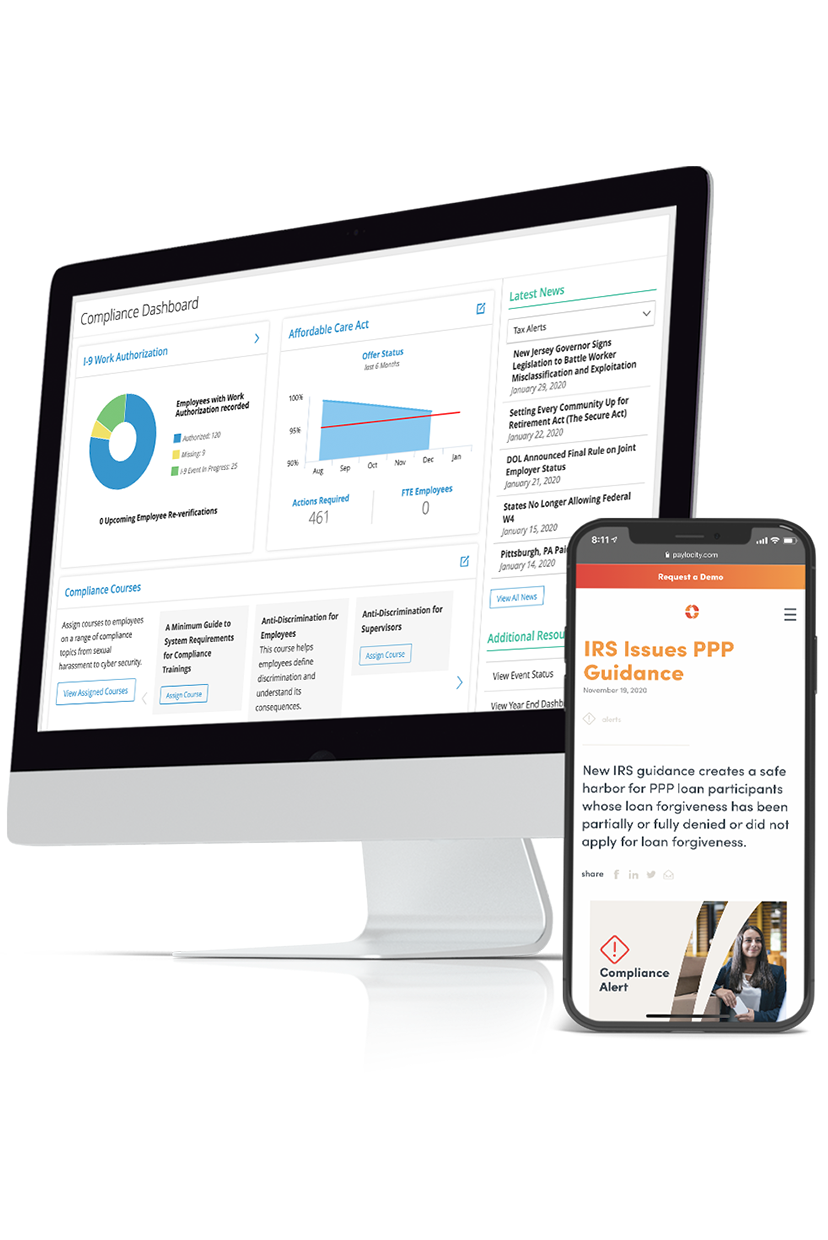resources
New Federal Tax Deductions for Qualified Tips and FLSA Overtime
July 14, 2025

Overview
On July 3, 2025, Congress passed the One Big Beautiful Bill Act (the Act), which President Trump signed into law during a special event on July 4, 2025. The Act extends tax cuts from the 2017 Tax Cuts and Jobs Act and includes many new provisions affecting compensation.
Two areas of particular importance are the new Internal Revenue Code (IRC) Sections 224 and 225, which, respectively, establish new federal tax deductions for qualified tips and Fair Labor Standards Act (FLSA) overtime earnings.
This new law is retroactive to January 1, 2025, and will end December 31, 2028.
New Qualified Tips Tax Deduction
Under the Act, the new Qualified Tip Deduction is equal to the “qualified tips” an individual receives during the tax year, specifically "cash tips received by an individual in an occupation which customarily and regularly received tips on or before December 31, 2024.”
Cash tips include amounts received from customers that are paid in cash or charged, and (in the case of an employee) amounts received under any tip-sharing arrangement. To qualify, the cash tip amounts must be:
- Paid voluntarily without any consequence in the event of nonpayment
- Not subject to negotiation
- Determined by the payor
Employee Considerations
- To claim the deduction, individuals must have a Social Security Number and file a joint tax return with their spouse, if married.
- The deduction applies to qualified tips up to $25,000 and includes limitations for high-earning individuals. The deduction will be reduced by $100 for each $1,000 by which the taxpayer's modified adjusted gross income exceeds $150,000 ($300,000 in the case of a joint return).
- The law includes transition relief for qualified tips that must be reported for periods prior to January 1, 2026. Filers will be able to approximate cash tips by any reasonable method specified by the Internal Revenue Service (IRS). Additional agency guidance is anticipated.
Employer Considerations
- Employees will be able to deduct qualified tips on their individual tax returns. This will require minimal changes to employer reporting, as tips subject to Social Security taxes are reported in Box 7 of Form W-2.
- The law codifies a requirement for Form W-2 to include the total tips reported to the employer, including tips above the Social Security wage base.
- The IRS will publish a list of occupations in which workers customarily and regularly receive tips no later than 90 days after enactment.
Employers should review their current policies and procedures and plan for any updates that may be needed. Additional agency guidance is expected to be forthcoming.
FICA Tip Credit Expansion for Beauty Services
In addition to eliminating tax on tips, the Act expands the employer social security credit with respect to employee tips as defined under 26 U.S. Code § 45B(2). In addition to tips for food or beverage employers, beauty services employers may also take into account customary tips received for:
- Barbering and hair care
- Nail care
- Esthetics
- Body and spa treatments
New FLSA Overtime Tax Deduction
Under the Act, this new deduction reduces an individual’s adjusted gross income by the amount of “qualified overtime compensation,” which is compensation paid to an individual in excess of the employee's regular rate (a.k.a. the overtime premium). The Act does not, however, change the amount of taxes withheld on an employee's paycheck when earning qualified overtime.
Previously, the law provided that all overtime be included in gross income, subject to federal income and employment taxes. Employers maintained records for overtime-eligible employees, but there was no separate overtime reporting requirement for tax purposes, and the overtime premium was not an eligible deduction.
What is the Overtime Premium?
The overtime premium under Section 225 is not the same as an employee’s standard FLSA overtime rate for hours worked over 40 in a workweek. Instead, the premium is the difference between an employee’s normal pay rate and their standard overtime pay rate.
In other words, if an employee normally earns $12 per hour, their standard overtime rate would be $18 per hour ($12 x 1.5), and their overtime premium would be $6 ($18 - $12).
Under the new law, only the earned wages attributable to that $6 premium amount would be included as “qualified overtime” and eligible for the new deduction.
Qualified Overtime Deduction Example
If Employee A’s regular pay rate is $14 per hour, their FLSA overtime rate would be $21 per hour ($14 x 1.5), and their overtime premium would be $7 ($21 - $14).
Last month, Employee A worked 50 hours in a workweek, earning $210 in overtime wages (10 overtime hours x $21 rate). However, only $70 of those overtime wages (10 overtime hours x $7 premium) would be eligible for the new deduction.
How is Standard Overtime Pay Different from the Overtime Premium?
As explained in DOL Fact Sheet 23, the standard overtime rate includes all remuneration for employment except certain payments excluded by the FLSA, including:
- pay for expenses incurred on the employer's behalf
- premium payments for overtime work or the true premiums paid for work on Saturdays, Sundays, and holidays
- discretionary bonuses
- gifts and payments in the nature of gifts on special occasions
- payments for occasional periods when no work is performed due to vacation, holidays, or illness
Such overtime earnings may be determined on a piece-rate, salary, commission, or some other basis, but in all such cases, the overtime pay due must be computed on the average hourly rate derived from such earnings. This is calculated by dividing the total pay for employment (except for the statutory exclusions noted above) in any workweek by the total number of hours worked.
Where an employee in a single workweek works at two or more different types of work for which different straight-time rates have been established, the regular rate for that week is the weighted average of such rates. That is, the earnings from all such rates earned from the same single employer are added together, and this total is then divided by the total number of hours worked at all jobs.
Employee Considerations
- To claim the deduction, individuals must have a Social Security Number and file a joint tax return with their spouse, if married.
- The deduction applies to qualified overtime earnings up to $12,500 for individual filers ($25,000 for joint filers) and includes income limitations on the deduction for individuals with adjusted gross income over $150,000 ($300,000 for joint filers).
- There’s also a specific exclusion that tips may not be counted towards qualified overtime earnings. Refer to FLSA Section 7 for more information on overtime wages that qualify for federal overtime.
- The Act includes transition relief for qualified overtime that must be reported for periods prior to January 1, 2026. Specifically, filers will be able to approximate qualified overtime by any reasonable method specified by the IRS. Additional agency guidance is anticipated.
Employer Considerations
- The new law adds a requirement to report overtime wages for federal income tax on Form W-2. Qualified overtime wages will continue to be included in Box 1 income, but the IRS may modify the tax withholding rules to account for the new deduction in a separate box. This will likely result in updated instructions and forms.
- The law also requires the IRS to modify withholding procedures for periods after December 31, 2025, which may result in changes to Form W-4 and/or withholding calculations for future tax years.
- Different overtime rules may apply under state laws or collective bargaining agreements, potentially posing additional administrative and reporting challenges. The “no tax” on overtime provisions of the Act applies to qualified overtime earnings that were calculated in accordance with the FLSA definition of overtime.
- The act does not eliminate the application of Social Security and Medicare (FICA) payroll tax from overtime, only federal income tax.
- Employers should review their current policies and procedures and plan for any updates that may be needed. Additional agency guidance is expected to be forthcoming.
Thank you for choosing Paylocity as your valued service partner. This information is provided as a courtesy, may change, and is not intended as legal or tax guidance. Employers with questions or concerns outside the scope of a Payroll Service Provider are encouraged to seek the advice of a qualified CPA, Tax Attorney, or Advisor.

Keep Up With Compliance
Between constantly changing employment laws and updates to the Affordable Care Act (ACA), keeping your workplace compliant can be a time-consuming and costly challenge. Eliminate the stress and stay up to date with our Compliance Dashboard. View compliance alerts and get a bird’s eye view of what you need to do to avoid fines and penalties.

